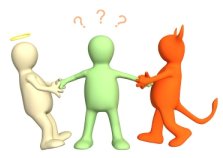According to business dictionary, we can define motivation as “Internal and external factors that stimulate desireand energyin people to be continually interested in and committed to a job, role, or subject, and to exert persistent effort in attaining a goal”.
There are several theories about this subject that explain the behavior that the CEO’s has to implement to have motivated employees, inspiring them to do the work.
Principal Theories:
1. Maslow’s Hierarchy of Needs: it is the most influential theory, which explains motivation based on a pyramid of needs.
http://drvaleriegalante.files.wordpress.com/2009/12/maslows-hierarchy.gif
Maslow said “when an inferior rank need is satisfied, the next level need becomes dominant and the attention is dedicated to the accomplishment of this higher rank need”. This says, when a need is supplied, the next one becomes with the same importance than the last one had. However this theory has received several critics because not all the people have the same priorities.
2. Frederick Herzberg’s Two Factors Theory: He based his investigation on professional satisfactions and professional dissatisfactions, which he called; Motivation factors (psychological growth) and Hygiene factors (avoidance of pain).
3. Theory X and Theory Y: The theory X, is about the employees that always are thinking on a negative way, are avoiding work and responsibilities. On the other hand, theory Y is about the employees that always are thinking beyond the responsibilities that already had.
It is important motivate the employees in a positive way, this could give to the company some of certain that it will be successful in the future.
Question:
In multicultural organizational contexts what could be a good strategy to keep people motivated towards a common task?
First of all, it is important give to the employees a salary that could sustain their principal needs, and also give them all the benefits, this is not only important for the employee it is important for the company to be secure in case of accidents or another circumstances. But not only economical part is important; the way that they feel in the organization is the most important of all, because if they don’t feel comfortable and happy with their work, they don’t want to do the work with the same capability and love. The CEO, plays an important role, he has to be very king with the employees, making sure that they feels comfortable working in his company.
References:
- Nelson, Debra L. and Quick, James Campbell. 2010. OrganisationalBehavior –Science, the Real World, and You. South-Western CengageLearning, Mason, USA. Chapter5.
- Business Dictionary (2010). Definition of motivation. Retrieved on January the 5th2011 from http://www.businessdictionary.com/definition/motivation.html








